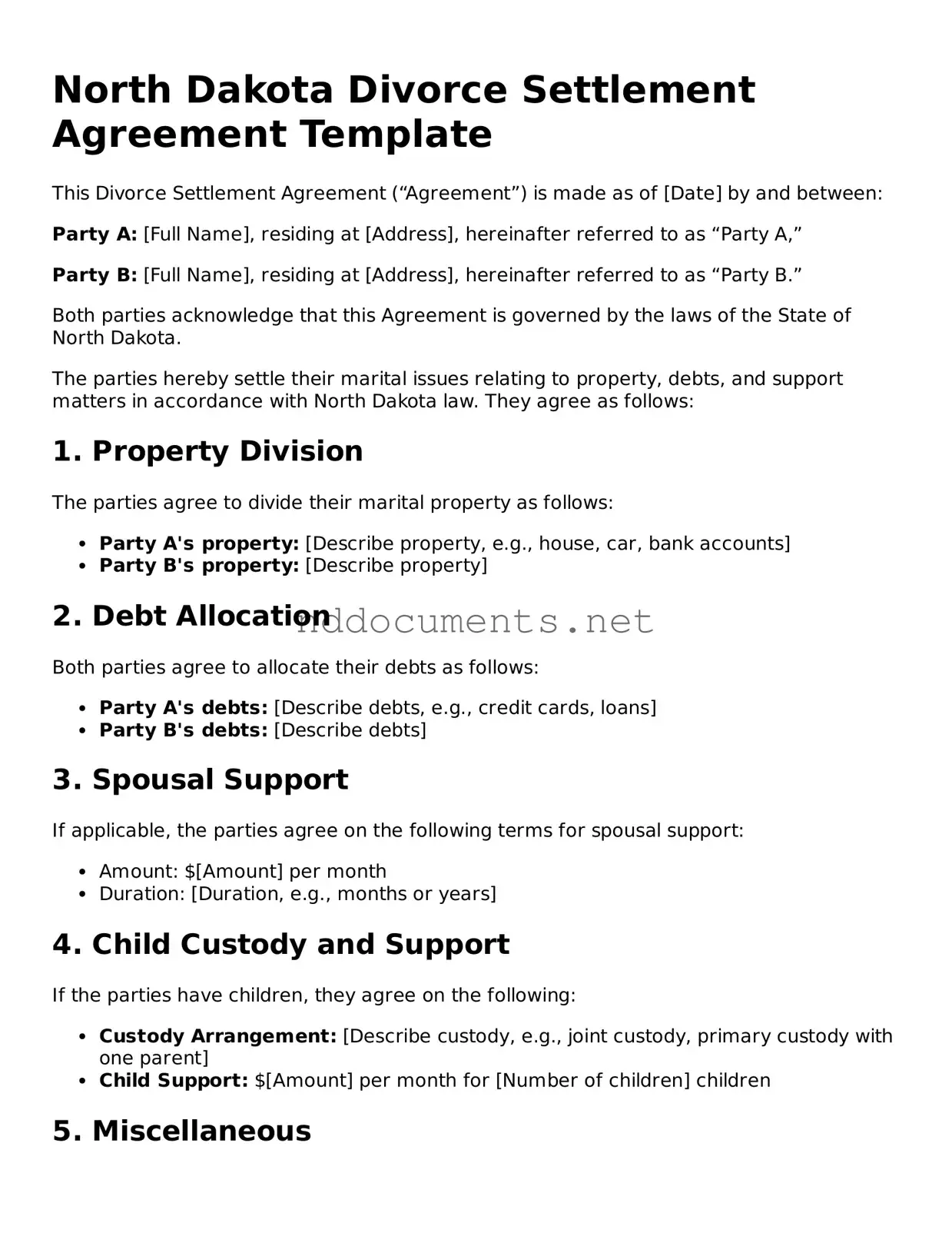When navigating the challenging waters of divorce, having a clear and comprehensive Divorce Settlement Agreement can significantly ease the process. In North Dakota, this form serves as a vital document that outlines the terms of the divorce, addressing critical aspects such as asset division, child custody arrangements, and spousal support. It provides a structured framework for both parties to agree upon the distribution of property and debts, ensuring that each individual's rights and responsibilities are clearly defined. Additionally, the agreement covers important details regarding child support and visitation schedules, which are essential for the well-being of any children involved. By formalizing these agreements in writing, couples can avoid potential conflicts and misunderstandings in the future. The Divorce Settlement Agreement not only reflects the mutual decisions made during negotiations but also serves as a legally binding contract that can be enforced in court. Understanding the significance and components of this form is crucial for anyone going through a divorce in North Dakota, as it lays the groundwork for a smoother transition into post-divorce life.
